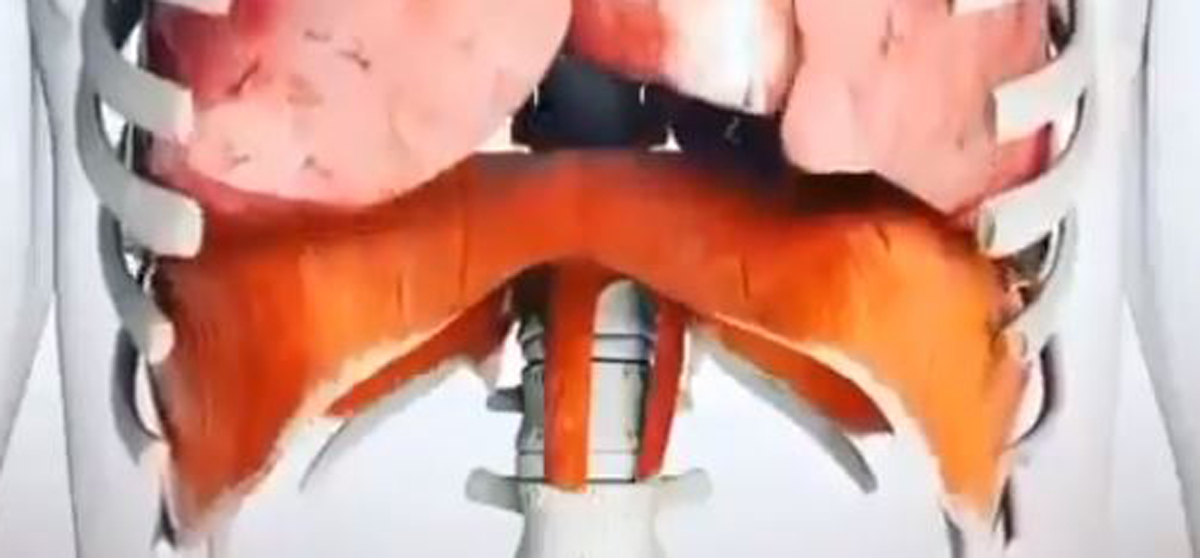Anxiety, Breathing, and Lower Body Traumas?
This illustration of breathing is so cool!
I follow Slava Bobrov on Twitter for his amazing visualizations of the body and cells. Last week he shared this animation of breathing. I was in heaven!
This animation (click on the image) shows how the lungs, ribs, heart and DIAPHRAGM are supposed to move with respect to each other. What I loved the most was seeing the two little tails connecting the diaphragm muscle to the spine. This detail is often omitted from images related to breathing and the diaphragm.
Why is this lower diaphragm connection such a big deal?
This lumbar spine connection of the diaphragm is one of the most under-rated intersections of the body. Why?
Very few professionals appreciate this anatomical intersection because it is not part of how they learn. In nearly all medical imagery and texts the body is divided into upper and lower halves, and they learn about each separately.
This diaphragm connection is actually THE LINK between the upper and lower parts of the body. From our perspective this central interconnection is so essential to function that I refer to it as the “Primal Cross.” Here’s why.
The diaphragm anchor muscle is co-located with the psoas in the lumbar spine. This co-location is why we often find that leg injuries and lower abdominal surgeries impact breathing as much as they impact movement and posture.
The psoas is one of the most influential muscles for hip and leg function because it has a role in hip flexion, hip rotation, and how your leg goes side-to-side. So many ways to be impaired. Let’s take a look at how, and some are not what you’d expect!
Why would the diaphragm not work correctly for breathing?
There are four categories of reasons we consistently find for why the diaphragm and psoas can be off-kilter and impacting your breathing.
- Traumas of life such as falling, bike, or auto accidents.
- Medical interventions such as gallbladder, appendix, c-section, or other abdominal surgeries.
- Illness such as COVID, pneumonia, or severe flu.
- Birth stressors such as C-section, breech, twin, or breathing issues.
Bridging helps you by supporting and resetting specific core muscle relationships which were traumatized. This restores the integrity of the core and diaphragm. By restoring the interconnections of the lower and upper body, your diaphragm will function better.
You will breathe and move more easily!

